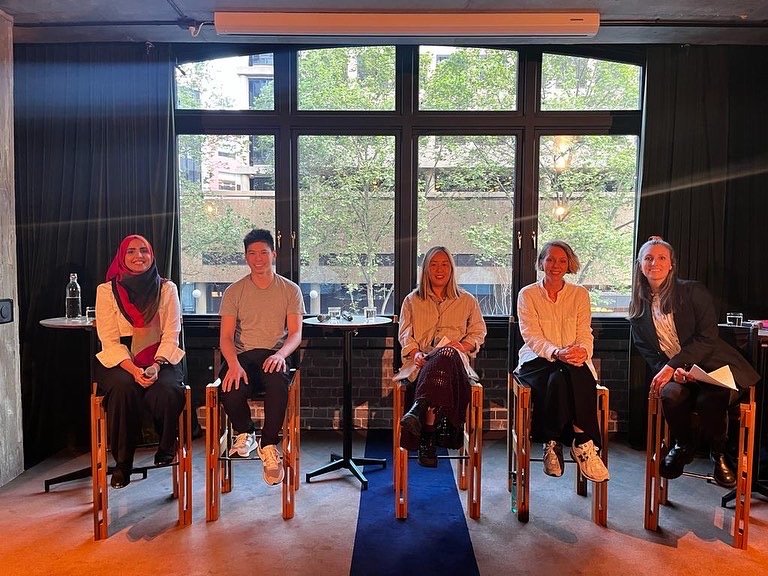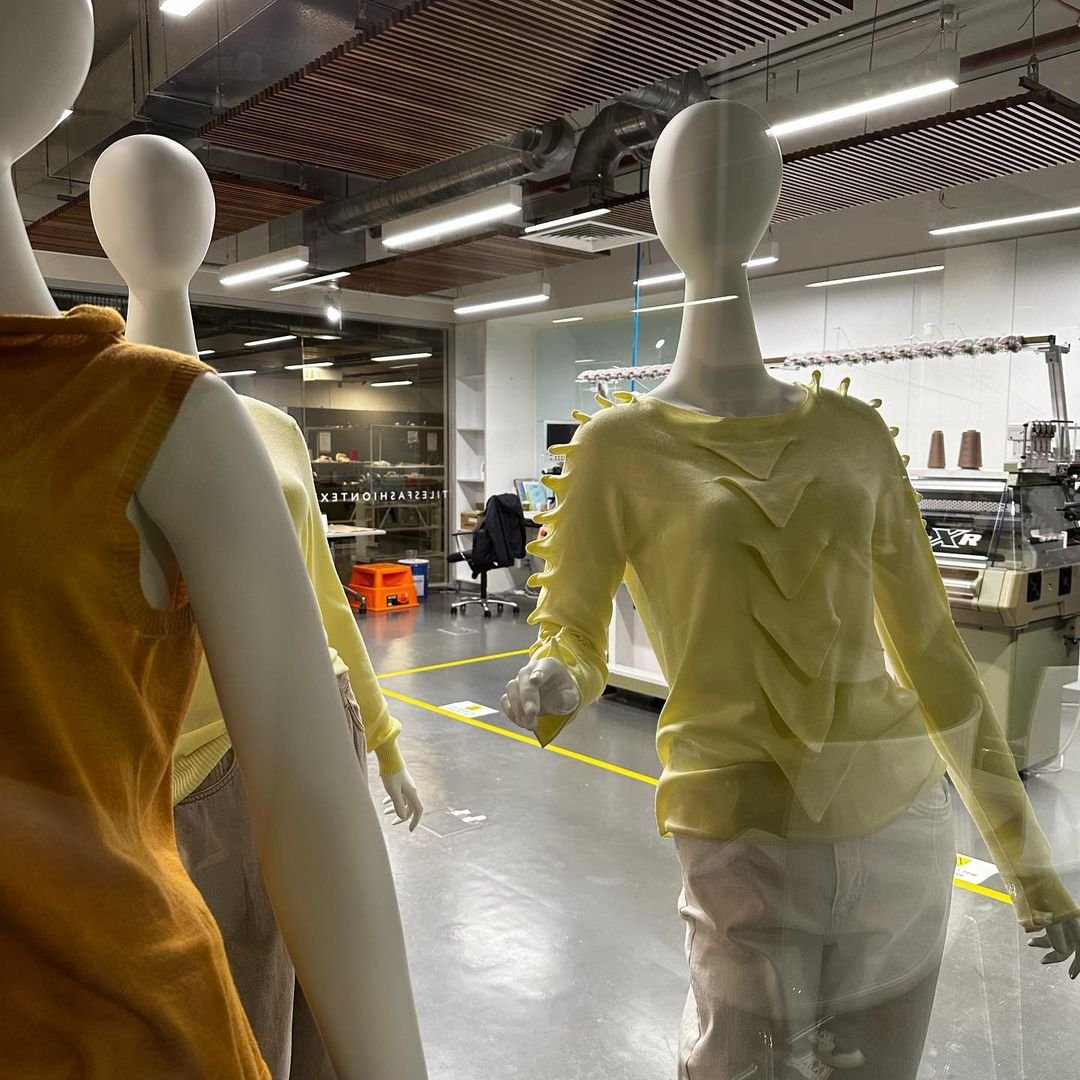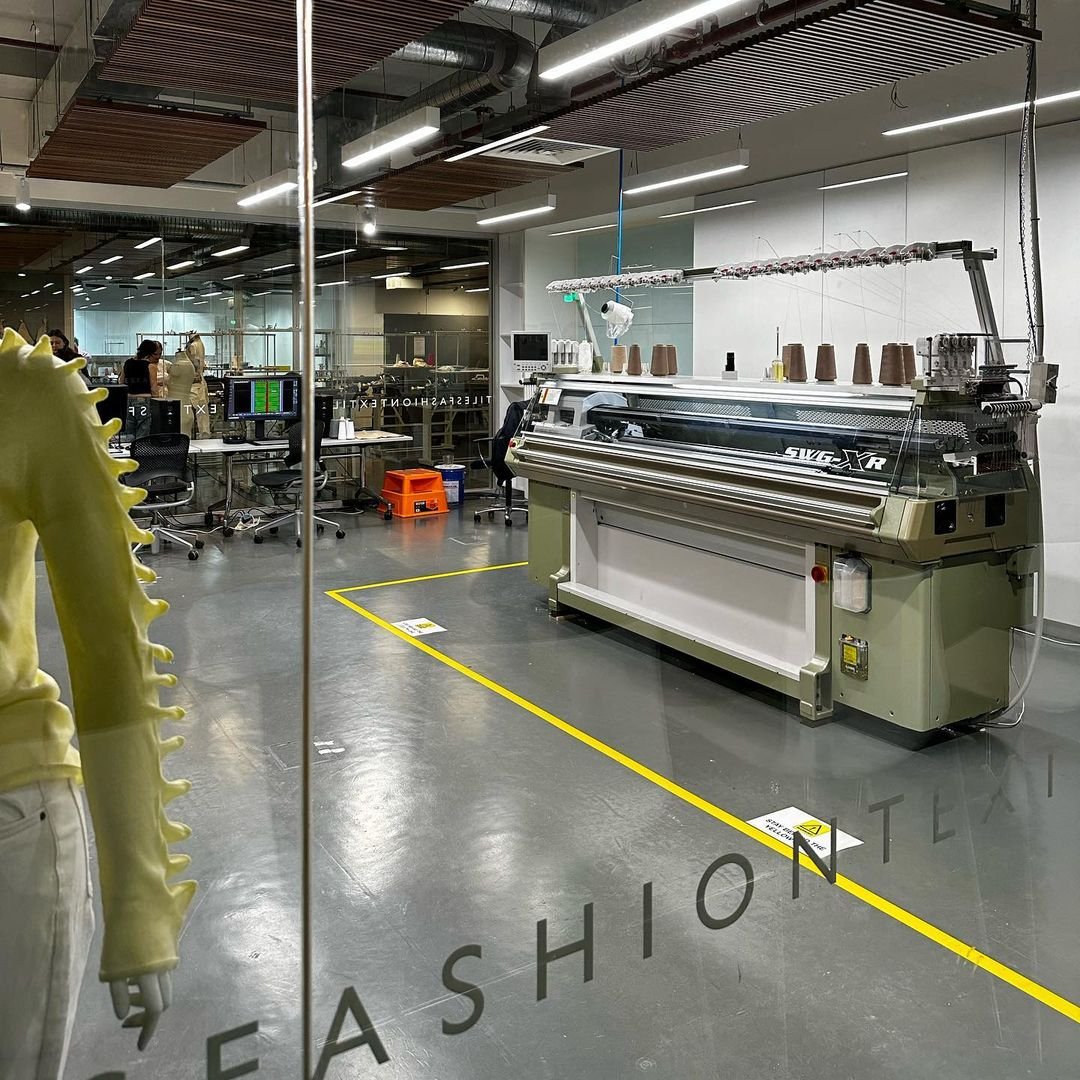‘Amodern’, Sydney Design Week by the Powerhouse
This month I was happy to support Amodern, Sydney Design Week by the Powerhouse. Curator Keinton Butler curated a powerful program that demonstrated, and facilitated conversations about, the role design plays in creating the necessary systems change to solve the world’s pressing ecological and social problems. It was an opportunity to not just showcase some of our work – like our event featuring the Shima Seiki machine – but also a reminder to continually bring the multiple threads together to support people, culture and environment, in the work that we do.
I was so excited to help UTS showcase the new Shima Seiki WHOLEGARMENT knit machine through a fantastic program we created for Design Week. As part of a pilot program that helped us learn how best to collaborate with industry partners, we invited designers Gary Bigeni (from his eponymous label) and Louise Sharpe (from MJ Bale) to create new designs to be tested on the machine. They both worked collaboratively with UTS’ 3D knit specialist, Shirley Tam, to create their beautiful and unique garments. The machine was in-action during the events, and the audience for the second event of the day saw the machine complete one of MJ Bale’s short sleeve polo knits. I am so thankful to Gary and Louise for their creativity and willingness to learn with me! Who knows, maybe we’ll be seeing these pieces in their collections in the future?
I also had the opportunity to support the AFC’s FashTech Lab event, which is a 3D design and virtual sampling program with the potential for huge environmental improvements to traditional sampling, by showcasing the results in UTS’ Data Arena. In the second round of this program, the AFC licensed an environmental footprint calculator tool from Wrap UK to measure the impact from creating virtual samples for 30 designs, versus the typical sampling process. Across the 30 designs, it was estimated that the program saved 635 litres of water and 3 tonnes of carbon dioxide – this roughly equates to one-fourth of an Olympic swimming pool worth of water, and the emissions from one round trip flight from Sydney to London. It isn’t hard to imagine the positive impact this could have on the planet if every brand took this step, particularly the larger brands that create hundreds of new styles each season.
I closed out my event-week by facilitating an incredible panel discussion on technology and circularity. This panel was curated by Valentina Zarew of New Romantic, and featured Courtney Holme of A.BCH, Amy Low of Piping Hot and the Social Outfit, Dr Mark Liu from UTS’ Climate Change Cluster, and Wajiha Pervez, a PhD candidate affiliated with the Centre of Excellence. Their work spans slow fashion, new materials, AI and dealing with surplus materials, and I’m fairly certain we could have spoken for an entire day if time had allowed.
After spending the better part of a decade working in sustainable fashion activism, it is truly momentous to have such a focus on fashion and sustainability in Sydney Design Week, to be able to get into the nuance of various aspects of design and production, and the multiple ways in which we can change things for the better. There is no magic thread that we can pull to solve fashion’s sustainability problems, but if we come together with commitment, knowledge and passion, we should be able to weave together some pretty powerful solutions.




